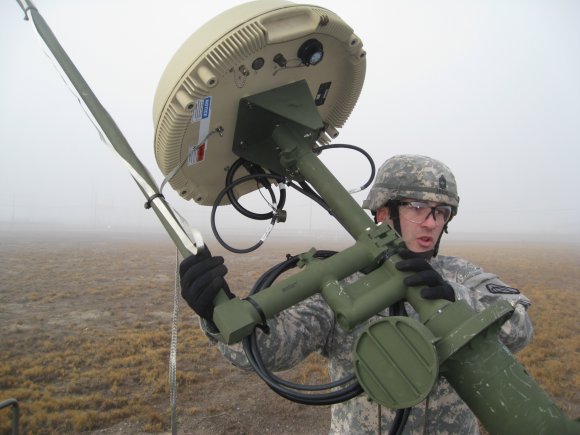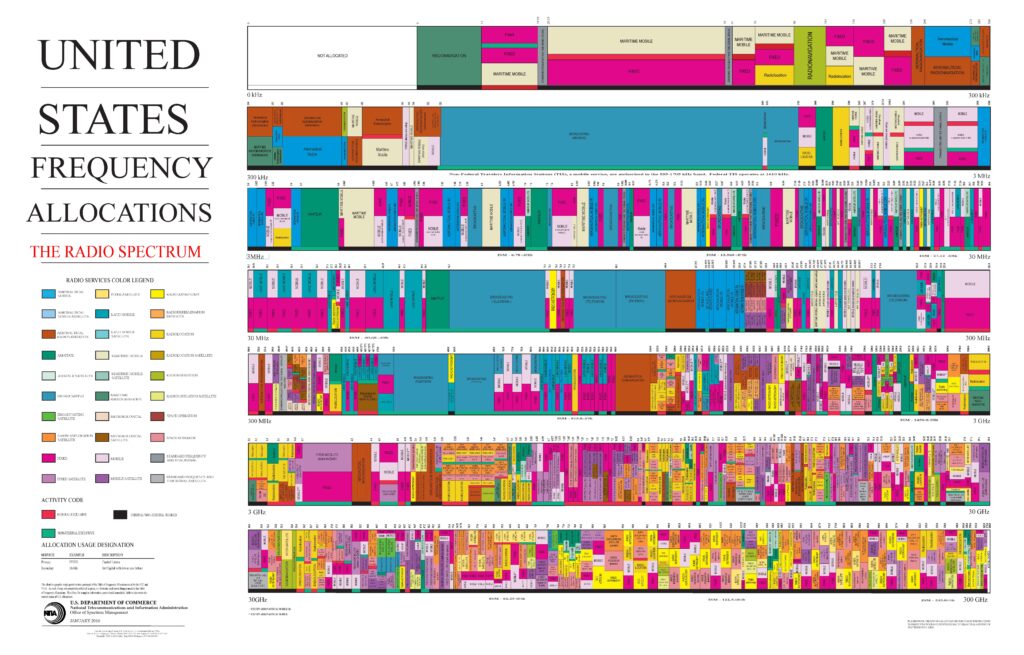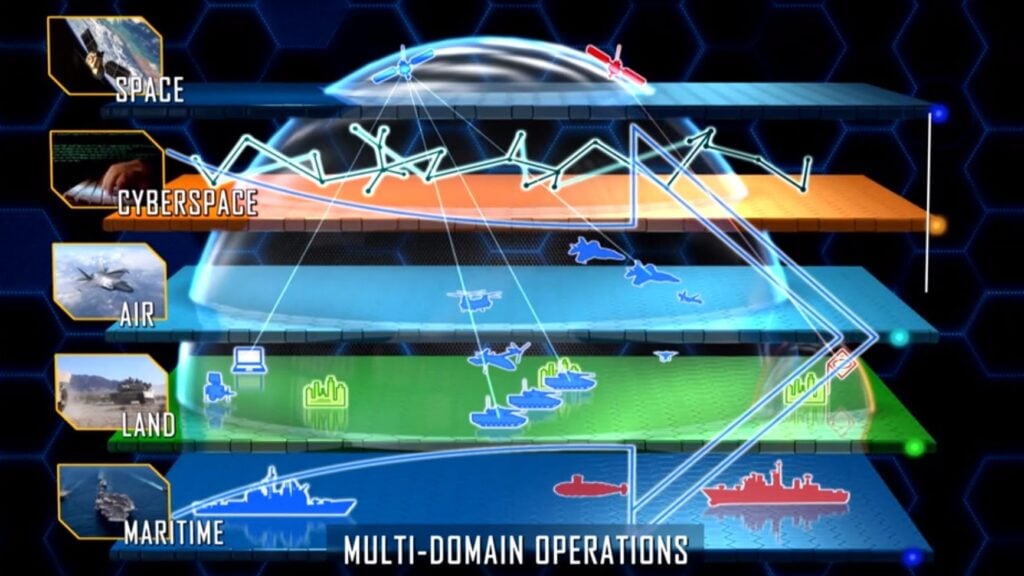
An Army soldier sets up a highband antenna in Afghanistan.
WASHINGTON: The Pentagon unveiled a new Electromagnetic Spectrum Superiority Strategy this afternoon, with a detailed implementation plan to follow in six months. Discussions with America’s Five Eyes allies – the UK, Australia, Canada, and New Zealand – has already begun, defense officials said this morning, and outreach to NATO will soon follow.
The 28-page “strategy” is, like most such Defense Department documents, a jargon-laden wishlist that doesn’t specify particular programs, timeline or budget. But, officials said, it does set out broad principles to guide development of new technologies, potential upgrades across “thousands of systems in use today,” and “appropriate trades” in future budgets – Pentagonese for cutting some programs to fund others. That detailed planning is already underway, led by the tech-savvy Vice-Chairman of the Joint Chiefs of Staff, Gen. John Hyten, and the Electromagnetic Spectrum Operations Cross Functional Team he co-chairs.
The key points that emerged from the welter of buzzwords?

A traditional frequency allocation chart.
Share Spectrum With Industry
While the Pentagon is still fighting a rearguard effort against the FCC-approved encroachment of 5G provider Ligado into frequencies used by military radar, the strategy signals that the Department overall is taking a “can’t beat ’em, join ’em” approach to the private sector. Instead of rigidly and exclusively assigning given bands of spectrum to one user, civilian or military, the Pentagon now wants to dynamically share spectrum. That will probably require artificial intelligence to allow the private sector transmit on frequencies the military isn’t using at a given place and time, and switch bands back to military use when needed.
High-tech adversaries won’t limit themselves to using FCC-assigned frequencies or respect civilian communications, one official said, and the US military needs to be able to train for that, including on US territory. “That’s going to require us to get access to commercial spectrum in United States…to be able to train and exercise,” he said. “We understand that the industry guys don’t like that.”
But sharing will benefit both sides, he argued. “We’re trying to give industry more access to spectrum and open up the spectrum space,” he said. “It’s not just about DoD needing access to commercial bands. It’s really about opening up the airwaves to allow industry more access to spectrum as well.”
Sharing spectrum dynamically in practice will require sophisticated software to decide who gets access to what frequencies in any situation. “We have to get to some automation” to do that, the official said, because most military radio and radar systems are still hardwired to work on certain narrow ranges of frequencies and can’t easily adapt to use a different band. “We’re using old, antiquated spectrum management processes and tools… They’re in the Fred Flintstone era,” he said, while cutting-edge civilian technology is “past the Jetsons.”

Multi-Domain Operations, or All Domain Operations, envisions a new collaboration across land, sea, air, space, and cyberspace (Army graphic)
Outmaneuver Adversaries In The Ether
The strategy makes clear that the US military sees the electromagnetic spectrum as a battlefield; victory there lets you cut your adversaries’ digital lines of communication, crippling their physical forces. While the Pentagon still refuses to designate the electromagnetic spectrum as an official “domain” of warfare alongside the land, sea, air, space, and cyberspace, it says that’s because the spectrum is a physical phenomenon equally present in – and essential to – all of them.
While the strategy document doesn’t mention the hot military buzzword of Joint All-Domain Command & Control, a future mega-network linking all the services, JADC2 won’t work without the ability to transmit and receive freely across the spectrum.
Even today, “most of the things that we do require freedom of action within the electromagnetic spectrum,” a second defense official told reporters, and for the future, “the JADC2 concept is extremely dependent on the electromagnetic spectrum.”
To dominate this invisible battlefield, the US no longer looks to a brute-force approach of blasting out static to jam frequencies the enemy might be using. Instead, it’s looking at a new kind of precision electronic warfare that uses artificial intelligence, signals intelligence and cyber warfare to subtly deceive and disrupt enemy transmissions. That requires merging the traditionally separate disciplines of electronic warfare — a combative approach focused on jamming the enemy – with spectrum management – a technical-bureaucratic approach focused on efficiently allocating frequencies among friendly forces.
In the strategy’s approach to combat operations, the second official said, “the primary focus is a holistic approach to electromagnetic spectrum management and electromagnetic warfare. In the past, those …have been somewhat siloed.”
The Pentagon is also working to bridge its internal bureaucratic divides. The Command, Control & Communications Leadership Board overseeing the spectrum strategy implementation plan is a separate entity from the Joint All-Domain Operations Cross Functional Team, the officials explained – but the same people co-chair both of them: Gen. Hyten and the Pentagon’s Chief Information Officer, Dana Deasy.
“There’s a close link between those two governance structures,” one official said.
Sullivan says Ukraine supplemental should cover all of 2024, long-range ATACMS now in Ukraine
“We now have a significant number of ATACMS coming off their production line and entering US stocks,” Jake Sullivan said today. “And as a result, we can move forward with providing the ATACMS while also sustaining the readiness of the US armed forces.”


























